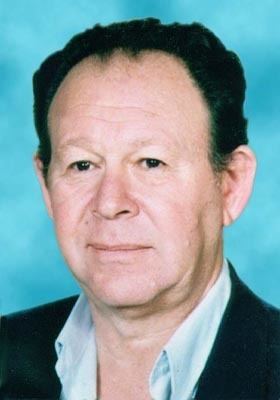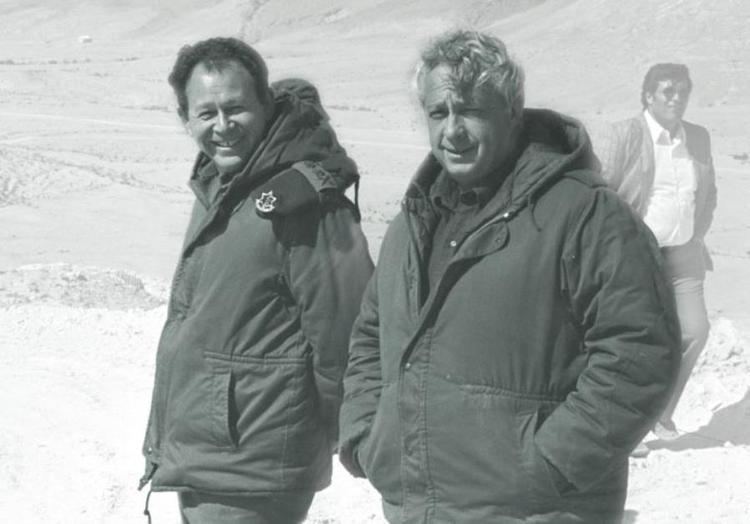Years of service 1946–1978 Books Azeet, paratrooper dog | Role Politician Name Mordechai Gur | |
 | ||
Rank Lieutenant generalDirector of OperationsChief of Staff Battles/wars 1948 Arab-Israeli WarSuez CrisisSix-Day WarYom Kippur War Similar People Uzi Narkiss, Rafael Eitan, Moshe Dayan, Haim Bar‑Lev, Israel Tal | ||
Mordechai gur charney report
Lt. Gen. Mordechai "Motta" Gur (Hebrew: מרדכי "מוטה" גור, May 6, 1930 – July 16, 1995) was an Israeli politician and the 10th Chief of Staff of the IDF. During the Six-Day War (1967), he commanded the division that penetrated the Old City of Jerusalem and broadcast the famous words, "The Temple Mount is in our hands!" (Hebrew: הר הבית בידינו, Har HaBayit BeYadeinu). As Chief of Staff, he had responsibility for planning and executing Operation Entebbe (1976) to free Jewish hostages in Uganda. He later entered the Knesset and held various ministerial portfolios. He contracted terminal cancer and committed suicide at the age of 65.
Contents
- Mordechai gur charney report
- SYND 12 10 73 GENERAL MORDECHAI GUR GIVES PRESS CONFERENCE
- Military career
- Civilian and political career
- Death
- References

SYND 12-10-73 GENERAL MORDECHAI GUR GIVES PRESS CONFERENCE
Military career

Gur was born in Jerusalem and later joined the Palmach Haganah (the underground armed group of the Jews in the British Mandate of Palestine). He continued serving in a military capacity with the founding of the Israel Defense Forces (IDF) during the Israeli War of Independence in 1948.

In the IDF, Gur served in the Paratroopers Brigade most of his career and became one of the symbols of the "red beret" brigade. During the 1950s he was a company commander under the command of Ariel Sharon. He was wounded during a counter-terror raid in Khan Yunis in 1955 (Operation Elkayam) and received a recommendation of honor from Chief of Staff Moshe Dayan. In 1957 he was appointed as adjutant to the brigade commander. After serving in this position Gur went to study at the École Militaire in Paris.
After he returned he was appointed as the commander of the Golani Brigade (1961–1963) and commanded the counter-terror raid in Nukiev. He brought over the traditions and attitude of the Paratroopers, raised morale, and helped instill an espirit de corps in Golani for which the brigade is still famous. In 1965 he was appointed as the head of the operations branch in the general staff of the IDF. He later also served as a commander of the IDF commanders' school.
In 1966 Gur was appointed as the commander of the 55th Paratroopers Brigade (Reserve), which he led during the Six-Day War. Gur and his troops were part of the assault force which wrested Jerusalem from the Jordanians, and which were the first to visit the Western Wall and the Temple Mount. The pictures of paratroopers crying at the Wall and Gur's audio recording in the communication networks, "The Temple Mount is in our hands!" (Hebrew: !הר הבית בידינו, Har HaBayit BeYadeinu!), became one of the most touching symbols of the war both to the Israeli public and those abroad.
After the war he was promoted to Brigadier General's rank and was appointed as the IDF commander in the Gaza Strip and northern Sinai Peninsula. In 1969 he was promoted to Major General and was appointed as the commander of the northern front, where Palestinian terrorists from the PLO, backed by Syria, attacked Israel's northern settlements. Gur led several counter-attacks to reign in the terror attacks, conquering the Shebaa farms from Syria in order to establish a defensive position to prevent border attacks.
From August 1972 to December 1973 he served as the IDF military attache at Israel's Washington D.C., embassy. In January 1974 he was reappointed as the commander of the northern front.
Following the retirement of General David Elazar due to the criticism of the Agranat Commission he was appointed in April 1974 as the 10th IDF Chief of Staff. He served in that position until 1978.
Civilian and political career
Following his retirement from the IDF, Gur was appointed as the general manager of Kur Mechanica company. In 1981 he was elected to the Knesset as a member of the Labor Party within the Alignment. Re-elected in 1984, he served as Minister of Health and was also a member of the Knesset's Security and Foreign Affairs Committee. Between 1986 and 1988 he served on the board of Solel Boneh, a construction company. In April 1988 he was appointed Minister without Portfolio, a position he retained following the 1988 elections until March 1990, when Labor pulled out of the coalition.
After the Labor Party won the 1992 elections, Gur was appointed Deputy Minister of Defense, responsible for preparing the Israeli economy for times of war and crisis and interacting with the Jewish settlers in West Bank and Gaza Strip.
Death
In 1995, Gur became seriously ill with terminal cancer. He committed suicide with a handgun on July 16, 1995 at the age of 65.
Area 21, a military base in the Sharon plain, was renamed in his honour (Camp Motta Gur).
In Modiin a street and a school was named after Gur.
